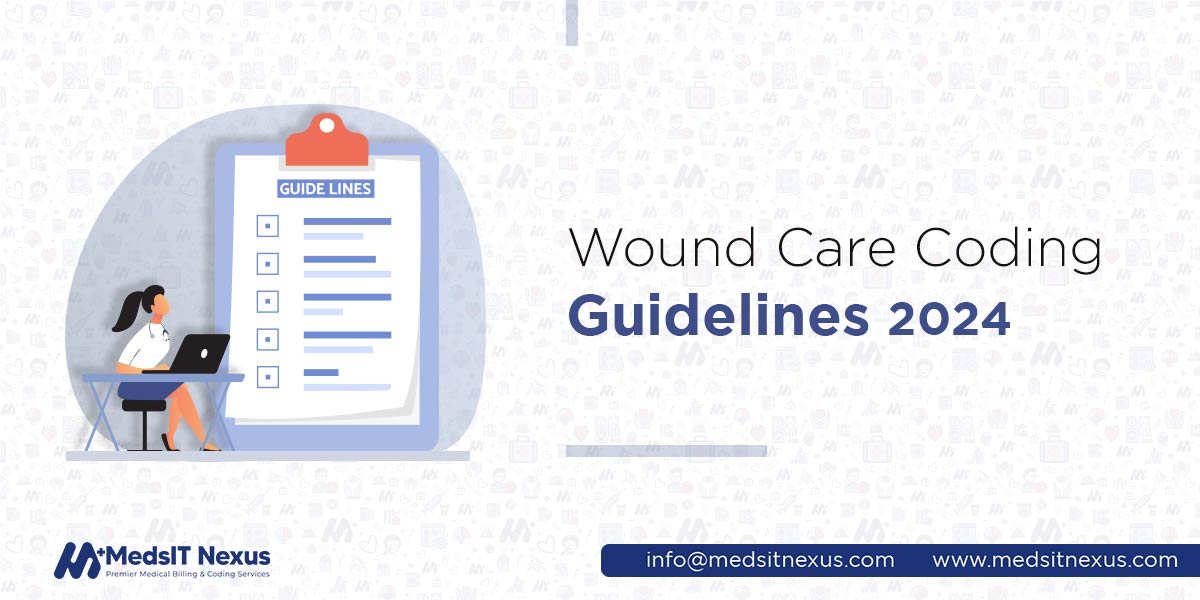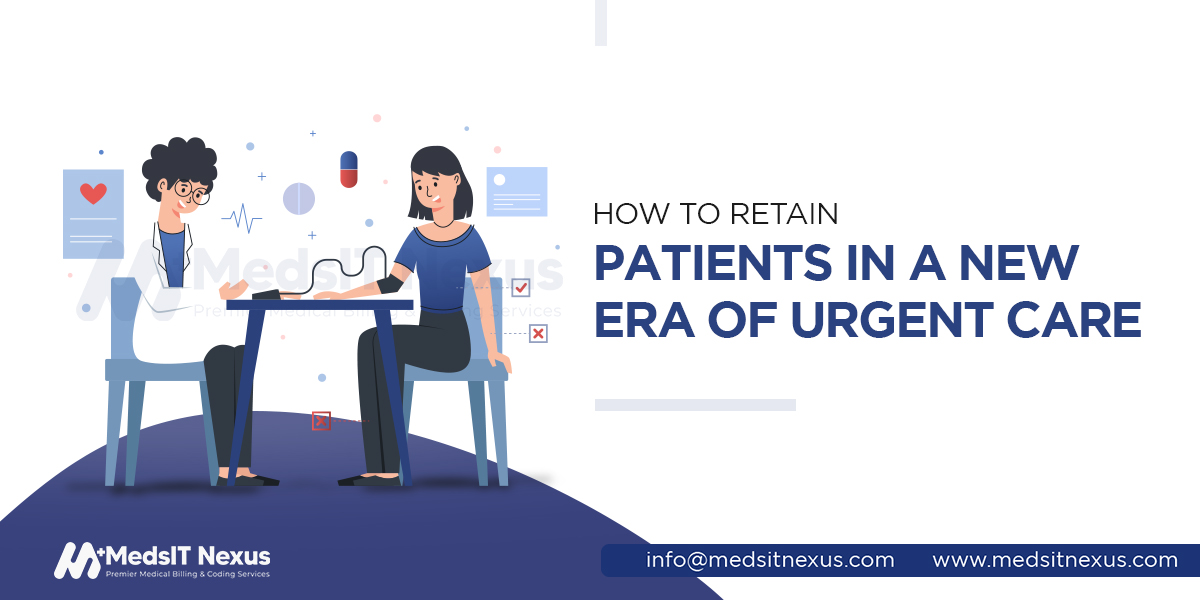Wound care coding guidelines 2024

Many people involved in wound care, like manufacturers, hospital departments, and doctors, often don't realize how important it is to focus on coding, payment, and coverage. Healthcare workers need to know the special rules for coding wound care properly, as set by the Centers for Medicare and Medicaid Services (CMS). Not sticking to these rules can lead to hefty penalties. So, healthcare pros need to know how to code wound care correctly, ensuring they bill accurately and follow the rules. Proper coding means carefully understanding CPT codes and their instructions. Some codes cover a whole session or a specific area, not just one wound or site. It's crucial to pay attention to these details! This comprehensive guide explores the nuances of mastering wound care coding, focusing on CMS guidelines and best practices for accurate coding and optimal patient outcomes.
Mastering Wound Care Coding: A Comprehensive CMS Guide
The essentials for the wound care coding
To excel in wound care coding, healthcare professionals should adhere to several fundamental principles:
Understand wound care details mentioned in documents
The type of wound and method to heal the wound are mentioned in the document. Wounds come in different
types, each needing specific care: Acute wounds (happen suddenly, like cuts or burns), chronic wounds
(take more time to heal, such as ulcers from pressure, venous issues, or diabetes), surgical wounds
(cuts made during surgeries), and traumatic wounds (caused by accidents or injuries). Identifying the
right type is crucial for accurate treatment coding.
Wound care offers various methods to help wounds heal. These include cleaning out the bad stuff from the
wound (debridement), using special bandages (dressings), applying healing creams (topical agents), and
even using vacuum-like therapy (negative pressure wound therapy). Each method has its secret code, and
using the right one is crucial for getting the proper payment.
Proper documentation
Proper documentation for getting appropriate reimbursement includes but is not limited to the following:
- It is necessary to attach the complete wound description (Size, appearance, drainage, infection, etc.)
- It is a must to mention the treatment methods or modalities used for wound care.
- Be specific about how the tissues were cut.
- Include details about the healing process, such as the type of dressing required, the time it takes for the wound to progress, and any upcoming appointments or follow-up visits needed.
- Also, mention any additional medical steps taken, such as antibiotics, biopsies, future tests, consultations with specialists, or vascular interventions.
Medical necessity
Doctors and providers must record why they are doing the services for their patients. If there is no clear proof, like test results, that shows a treatment is helping the patient, the medical record should still have strong reasons explaining why the treatment is needed. The record should also show how skilled the healthcare provider needs to be to carry out the treatment.
CPT codes for basic wound care
Here is the bird’s eye view of the common CPT codes for basic wound care:
97597: Procedural code for open wound (e.g., devitalized epidermis and/or dermis,
debris, fibrin, biofilm, exudate), debridement (e.g., sharp selective debridement with forceps, scalpel,
and scissors), including topical application, use of a whirlpool, wound assessment, when performed and
instruction for ongoing care, total wound(s) surface area; first 20 sq cm or less, per session
97598: Code 97598 is an extension of 97597; debridement is performed on wounds larger
than the standard size, each additional 20 sq cm of debridement.
97602 Removal of devitalized tissue from the wound, non-selective debridement,
excluding anesthesia (e.g., enzymatic, abrasion, wet-to-moist dressings, larval therapy) including
topical application, wound assessment, and instructions for ongoing care, per session.
97605: Negative pressure wound treatment, involving topical applications, wound
examination, continued care instructions, total wound surface area less than or approximately equal to
50 sq cm, each session
97606: Total wound surface area greater than 50 sq cm.
Acute wound care management codes
Specific codes like 97597, 97598, and 97602 are classified as "sometimes therapy" codes, and healthcare
professionals must bill 97597 and 97598 when they are medically necessary. According to the IOM Medicare
Claims Processing Manual, these codes can be provided without a specific therapy plan by physicians or
NPPs or as incident-to-services. If a non-therapist offers the service, therapy modifiers are not used,
and a non-therapy Revenue Code is applied.
However, when therapists administer these services, there must be a certified therapy plan, depending on
a detailed evaluation, signed by the treating physician or NPP and billed using the appropriate therapy
modifier. When therapists perform wound care management within their licensed scope, they must include
the suitable therapy modifier (GN, GO, GP) and the therapy Revenue Code for billing.
These guidelines are crucial to ensure accurate billing and adherence to CMS therapy guidelines outlined
in the IOM Medicare Benefit Policy Manual.
Debridement codes and their documentation requirement
When coding for debridement, you should use specific CPT codes (97597, 97598, or 97602) unless the medical records clearly show that a surgical debridement was done.
- Selective debridement CPT codes 97597, 97598
For selective debridement (CPT codes 97597 and 97598), the documentation should clearly state what tools
were used, like water jets, scissors, scalpels, or forceps. 97598 code indicates each additional 20
square centimeters of debridement.
The healthcare provider also needs to assess the wound thoroughly, looking at how it drains, its color,
texture, temperature, how well it's supplied with blood, the condition of the surrounding tissue, and
the size of the area that needs debridement.
- Non-selective debridement CPT code 97602
Code 97602 is a B status indicator, and hence, separate payment is not allowed. For non-selective
debridement (CPT code 97602), the documentation should specify the method used, such as wet-to-moist,
enzymatic, or abrasion. Just like selective debridement, a careful wound assessment is crucial,
considering all the abovementioned factors.
Using CPT code 97602 alongside CPT codes 97597 and/or 97598 for wound care on the same wound on the same
day is not the right approach.
Code for Wound Dressing Change
Dressing used on wounds is included in the services covered by CPT codes 97597, 97598, and 97602. You can't charge extra for them separately. You should only give an Advance Beneficiary Notice of Noncoverage (ABN) for services that might get denied because they're not medically necessary. For instance, offering an ABN for a dressing change isn't needed because the cost is already included in other billed procedures.
Whirlpool (Hydrotherapy)
If a patient gets a whirlpool treatment for a wound and later receives selective debridement services
for the same wound during the same visit, the whirlpool cannot be charged separately, unless different
wounds are treated. However, if non-selective debridement is performed, the whirlpool can be billed
separately with a modifier 59.
If the whirlpool treatment is done on the same body part as the wound care, it can't be billed
separately. But if it is for a different body part, separate billing is allowed.
Surgical debridement (11000-11012 and 11042-11047)
When doctors clean wounds, they use codes like 11042-11047 based on the depth and area of the tissue
removed.
11042: debridement, subcutaneous tissue, includes epidermis and dermis (if performed, for the first 20
cm sq or less)
11043: debridement, muscle, and/or fascia includes the epidermis, dermis, and subcutaneous tissue (if
performed, for the first 20 cm sq or less)
11044: debridement, bone includes the epidermis, dermis, subcutaneous tissue, muscle, and/or fascia (if
performed, for the first 20 cm sq or less)
11045: debridement, subcutaneous tissue includes epidermis and dermis (if performed, for each additional
20 cm sq)
11046: debridement, muscle, and/or fascia includes the epidermis, dermis, and subcutaneous tissue (if
performed, for each additional 20 cm sq)
11047: debridement, bone includes the epidermis, dermis, subcutaneous tissue, muscle, and/or fascia (if
performed, for each additional 20 cm sq)
Coding considerations
For a single wound, the deepest level of tissue removed is noted. If multiple wounds have the same
depth, their surface areas are added up, but different depths are not combined. These codes are for
hospital settings and cover deep tissue cleaning, not for minor procedures like nail trimming or wart
removal. Doctors should use the appropriate codes for specific services provided.
Dressings put on wounds are included in codes 11000 to 11012 and 11042 to 11047. You can't bill
separately for dressings. If there is a serious infection requiring deep cleaning (codes 11004 to
11008), those are only for inpatient treatments. When dealing with multiple wounds at different levels,
the deepest one determines the depth, and areas are added up if they are at the same depth. These codes
are for removing damaged tissue from wounds.
Evaluation & re-assessment codes
When a healthcare professional assesses an initial wound, like when you first go to a doctor, they can bill for this service separately if it's medically necessary. They use codes like 97161-97163 for initial physical therapy evaluations. However, if the follow-up visit involves changing the wound dressing without additional procedures, it is usually not covered separately. This routine service might be included with other services like cleaning the wound.
Codes for modalities
29580: Unna boot
CPT code 29580 describes the application of an Unna boot, a type of compression bandage, to manage edema and promote wound healing. This code is specific to the lower extremities and involves the application of the Unna boot, followed by strapping.
29581: Multilayer compression system including ankle and foot
CPT code 29581, on the other hand, relates to the application of a multi-layer compression bandage
system for the management of ulcers in the lower extremities. This code is mainly implemented when a
healthcare provider applies compression bandages to treat ulcers on the legs or feet, such as venous
stasis ulcers.
Note: When patients undergo both wound cleaning and the application of an Unna boot or a multilayer
compression dressing, only the cleaning procedure is eligible for reimbursement. However, if only an
Unna boot or a multilayer compression dressing without wound cleaning is used, that application
qualifies for reimbursement.
97610: Low frequency, non-contact, non-thermal ultrasound
This is a medical procedural code for the application of “low frequency, non-contact, non-thermal
ultrasound ” (MIST therapy), including topical application(s), when performed, wound assessment, and
instructions for ongoing care, per day, and is maintained by AMA and can be reported once per day during
the treatment session.
When using the code for MIST therapy, which involves using low-frequency, non-contact, and non-thermal
ultrasound (with the code 97610), you should make sure to keep track of a few essential details:
- Keep a record of how many times you apply topical treatments during each day's MIST therapy session.
- Note when you perform these therapy sessions and how frequently they occur.
- Be sure to assess the wound regularly and document its progress during the treatment.
- Provide instructions for the ongoing care of the wound to ensure it heals properly.
It's important to note that there are no specific codes for the applicator kits used during MIST therapy. These kits are considered consumable items and aren't separately reimbursed.
Are you finding it difficult to code for wound care accurately? MedsIT Nexus wound care billing and coding services is around the corner to alleviate your concern
MedsIT Nexus is a state-of-the-art software solution meticulously crafted to address the challenges faced by healthcare professionals in wound care coding. This innovative platform combines advanced artificial intelligence algorithms with extensive medical knowledge, empowering healthcare providers with a tool that ensures accurate and efficient coding processes. We generate detailed reports, offering insights into coding patterns, standard errors, and reimbursement trends. By embracing MedsIT Nexus, healthcare providers can experience a myriad of benefits. Firstly, the accuracy of wound care coding improves significantly, leading to reduced claim denials and faster reimbursement cycles.
Dr. Sana Pervez, Pharm.D, CCS, CPC -
Clinical Compliance Advisor at MedsIT Nexus
Responsible for Medical and compliance review of all healthcare RCM and billing content before publication.






